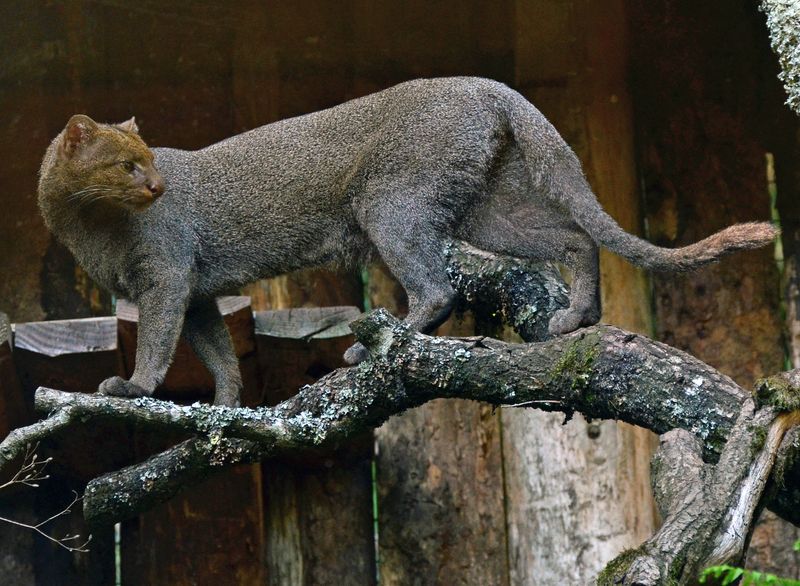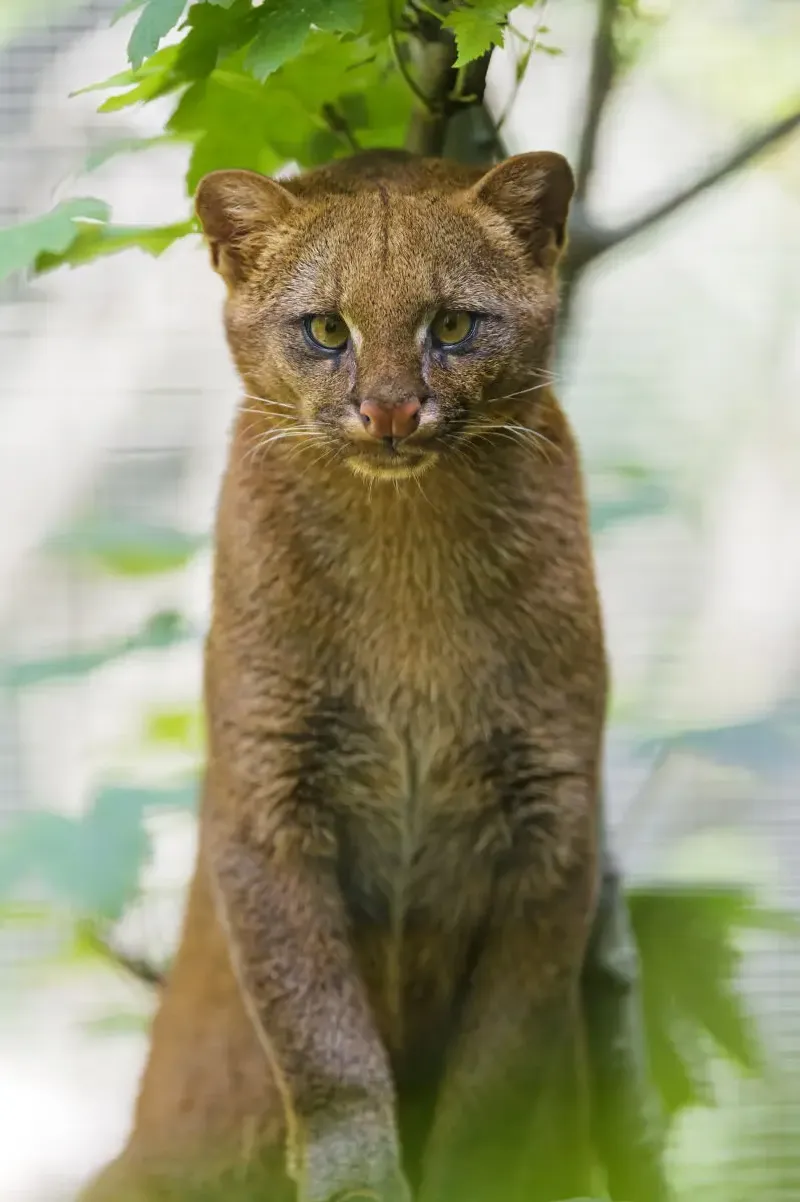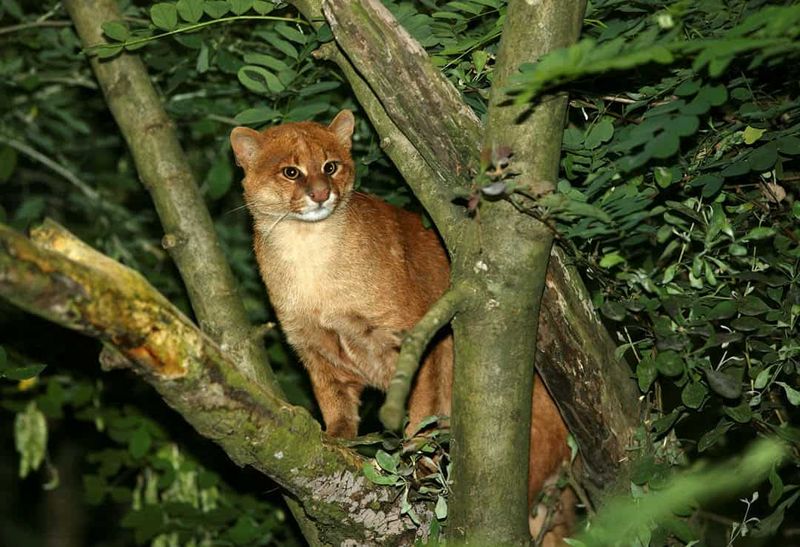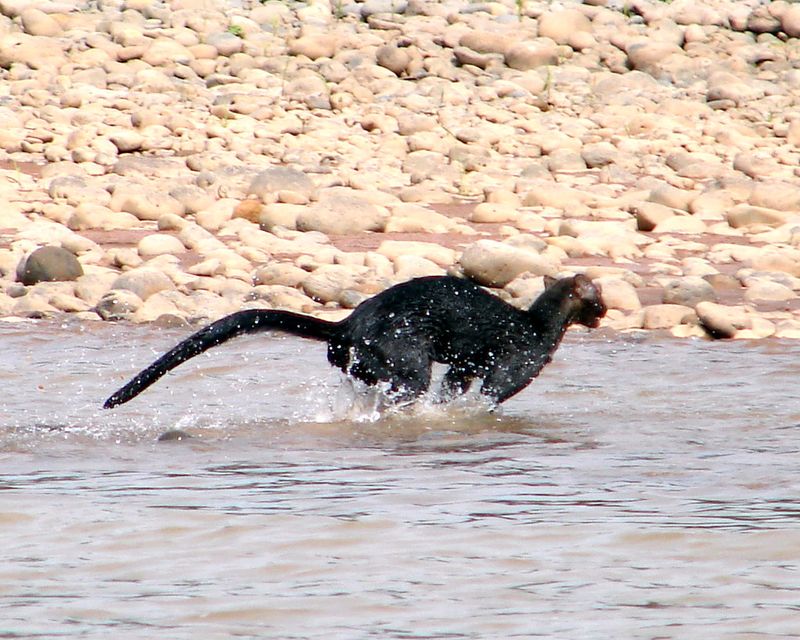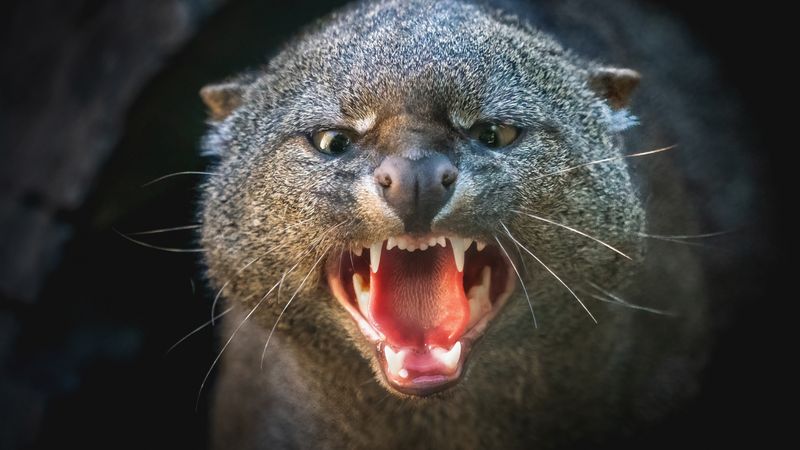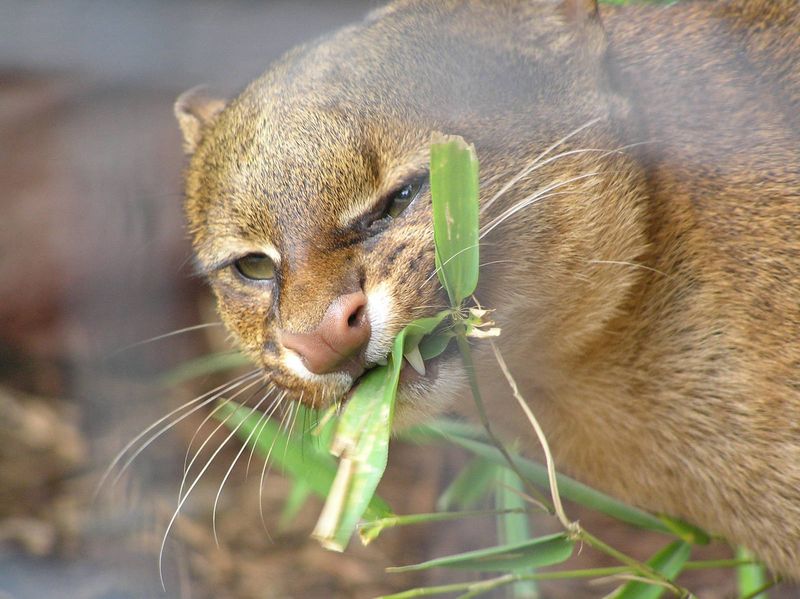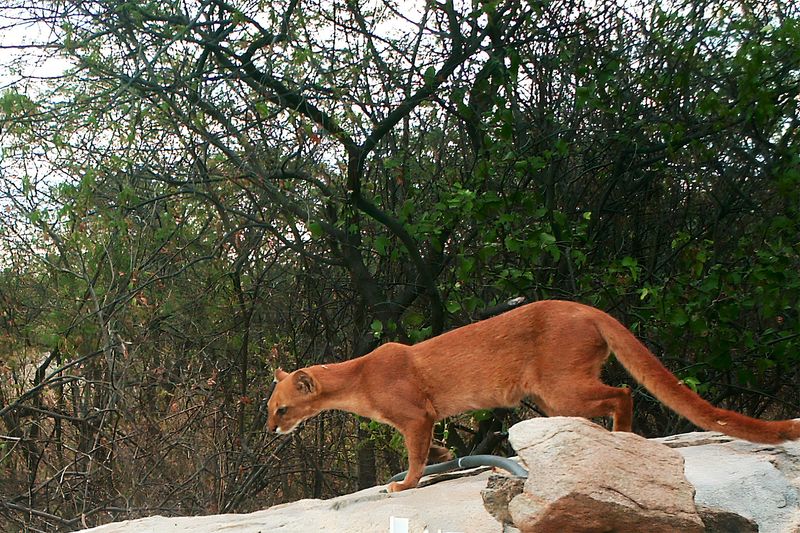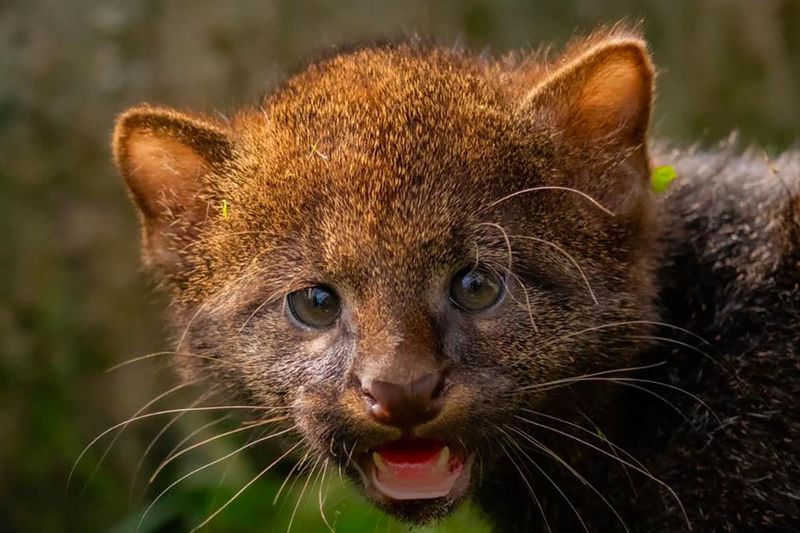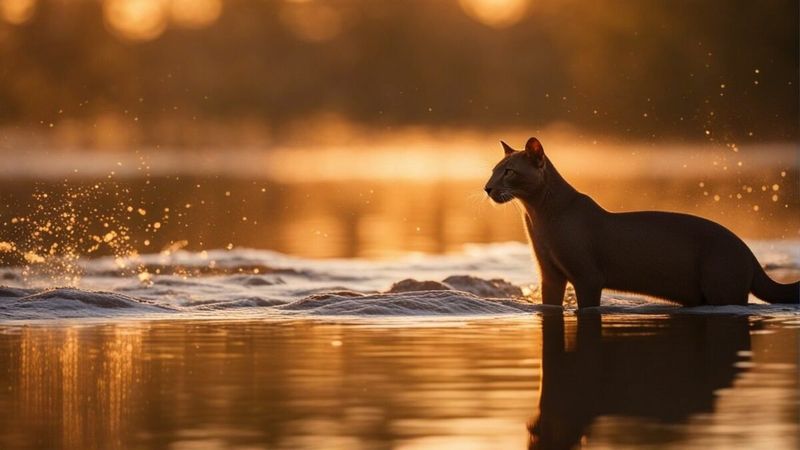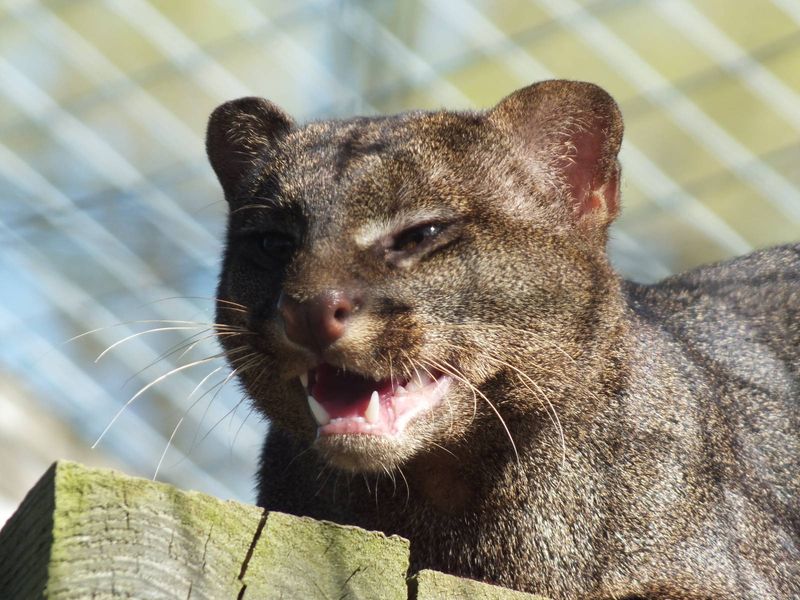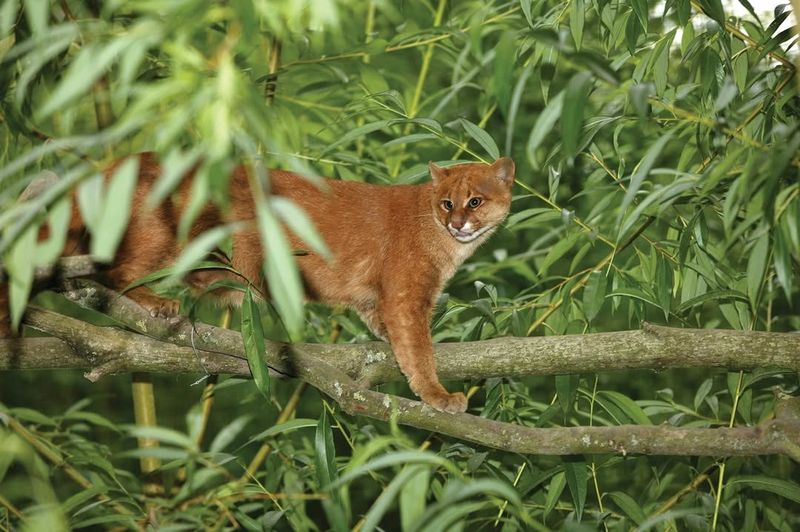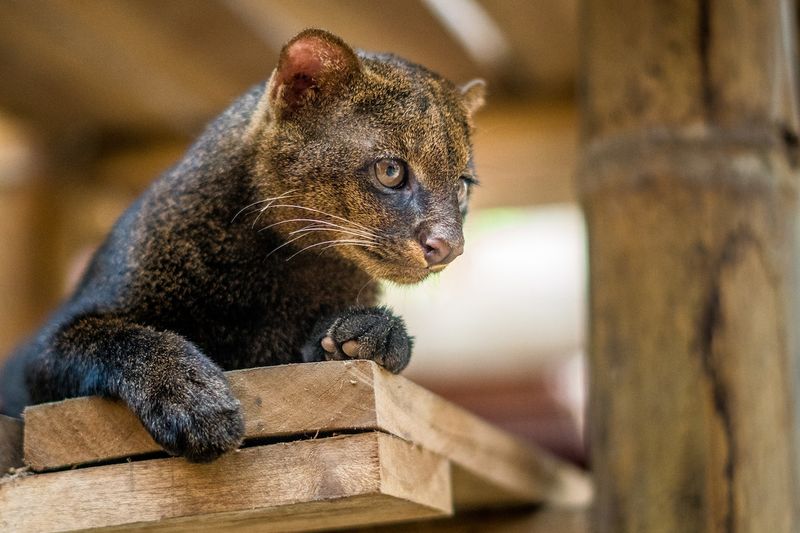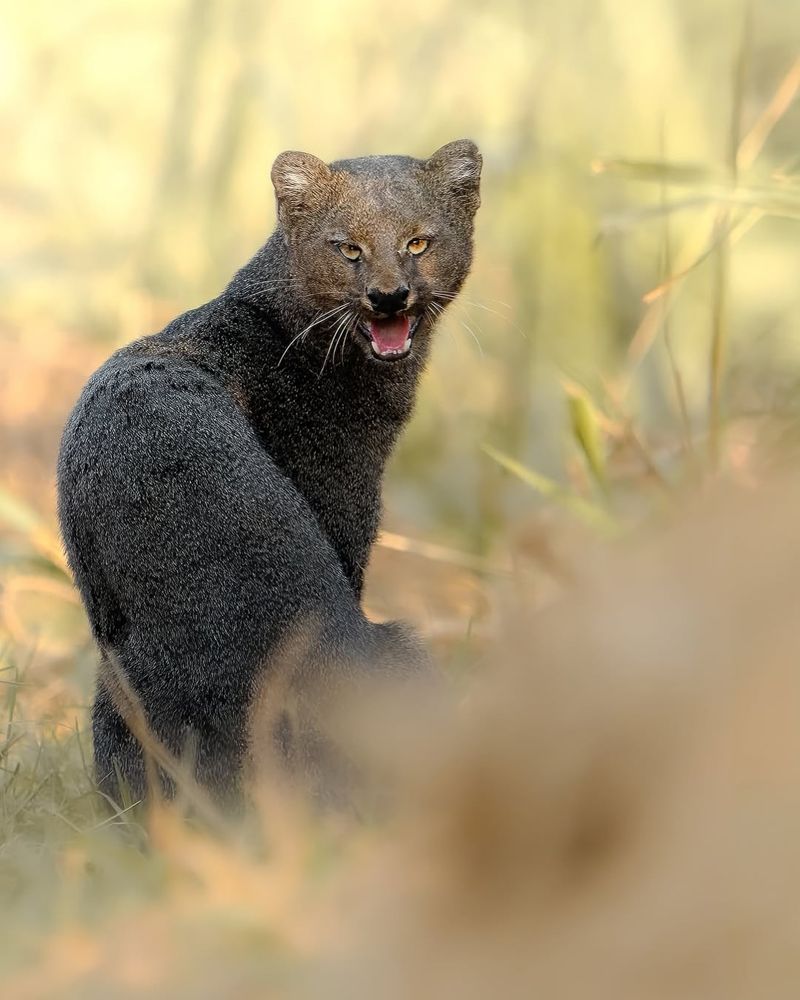📖 Table of Content:
- 1. Elongated Body and Short Legs
- 2. Two Distinct Coat Colors
- 3. Excellent Climbers
- 4. Superb Swimmers
- 5. Keen Eyesight and Hearing
- 6. Versatile Diet
- 7. Silent and Agile Hunters
- 8. Wide Range of Vocalizations
- 9. Daytime Activity (Diurnal Behavior)
- 10. Solitary and Territorial Nature
- 11. Low Reliance on Large Prey
- 12. Fast Runners
- 13. Strong Reproductive Strategy
- 14. Ability to Live in Varied Habitats
The jaguarundi isn’t your typical wild cat. With its long, weasel-like body, short legs, and an uncanny ability to climb, swim, and sprint, this feline seems like nature’s experiment in versatility. Unlike its more famous cousins—the jaguar or the ocelot—the jaguarundi doesn’t rely on brute strength or flashy spots to survive. Instead, it thrives with a mix of agility, intelligence, and adaptability, making it one of the most intriguing yet overlooked predators in the Americas.
What makes the jaguarundi so special? For one, it breaks the mold of what a wild cat should be. It hunts during the day while most of its relatives prowl at night. It’s just as comfortable dashing across open fields as it is slinking through dense underbrush or even diving into the water. From its keen senses to its clever hunting techniques, the jaguarundi has mastered the art of survival by adapting to almost any environment it finds itself in.
In this article, we’ll explore 14 amazing adaptations that make the jaguarundi a true survivalist. Whether it’s their secret weapon for catching prey, their unexpected social skills, or their unique vocal range, these cats are full of surprises. Get ready to meet one of nature’s most underrated yet fascinating felines!
1. Elongated Body and Short Legs
Unlike most wild cats, the jaguarundi has a body shape that resembles a weasel more than a typical feline. This unique structure allows it to navigate through dense undergrowth with ease, slipping between bushes and under logs where larger cats might struggle. Speed is another advantage of this streamlined form, enabling the jaguarundi to chase down small prey across open terrain. While its short legs may seem like a disadvantage, they actually contribute to its stealth by keeping the cat close to the ground. This low profile helps it avoid detection by both predators and prey alike. Additionally, its elongated body enhances flexibility, making sudden turns and agile movements effortless. As a result, the jaguarundi thrives in environments where other predators might find movement more difficult.
2. Two Distinct Coat Colors
Adaptability in appearance is a rare but useful trait among wild cats, and the jaguarundi has mastered it. Unlike most feline species, it comes in two distinct color morphs: a reddish-brown form and a dark gray or black form. This variation provides a natural advantage, allowing individuals to blend into different landscapes, from grassy savannas to shadowy forests. Camouflage is essential for both hunting and avoiding larger predators, making this trait a vital tool for survival. Some researchers believe that the coat colors are influenced by habitat type, with darker jaguarundis more common in forests and lighter ones found in open areas. Unlike other species where color morphs are linked to age or gender, both colors appear in the same population and even within the same litter. This built-in disguise gives the jaguarundi an edge in a wide range of ecosystems.
3. Excellent Climbers
Scaling trees is not usually associated with small, ground-dwelling cats, but the jaguarundi defies expectations. With strong limbs and sharp claws, it can easily climb trees when necessary, whether to escape danger or search for food. Unlike arboreal cats that rely on tree-dwelling prey, the jaguarundi mainly climbs for convenience rather than necessity. Perching on a branch provides a better vantage point for spotting potential prey or threats. This climbing ability also gives it access to areas where competition for food is lower, as many predators avoid venturing into trees. Although it prefers hunting on the ground, its versatility ensures it can exploit multiple environments. In some cases, jaguarundis have been observed using trees as escape routes when faced with threats from larger predators.
4. Superb Swimmers
Water is no obstacle for this adaptable feline, which is a rarity among small wild cats. The jaguarundi is an exceptional swimmer, effortlessly gliding through rivers and streams in search of food or to evade danger. Unlike many cats that avoid water, it can dive and paddle across bodies of water with ease, often using aquatic environments to its advantage. This skill allows it to hunt near water sources where small mammals, fish, and amphibians thrive. In regions with seasonal flooding, being a proficient swimmer ensures survival by allowing movement between isolated patches of land. It also reduces competition for food, as fewer predators are comfortable hunting in wet environments. The jaguarundi’s relationship with water is just one more example of its remarkable adaptability.
5. Keen Eyesight and Hearing
Detecting movement in dense foliage requires exceptional senses, and the jaguarundi is well-equipped in this regard. Its vision is highly adapted for detecting subtle movements, even in the dappled light of forests or open grasslands. While some wild cats rely heavily on night vision, the jaguarundi’s eyesight is fine-tuned for daytime hunting. Complementing its sharp vision is an acute sense of hearing, which allows it to pick up the faint rustling of potential prey. The ability to hear high-frequency sounds helps in detecting small animals like rodents and birds. Even when prey is hidden from view, sound cues provide enough information to locate and ambush it. With these finely tuned senses, the jaguarundi remains a highly effective predator in a variety of environments.
6. Versatile Diet
Few wild cats can claim to have as broad a palate as the jaguarundi. It is an opportunistic carnivore, meaning it eats whatever is most readily available in its habitat. Small mammals, birds, reptiles, amphibians, and even insects can all be part of its diet. This adaptability ensures survival even when certain prey populations decline due to seasonal changes or environmental shifts. Unlike specialized predators that struggle when their preferred prey disappears, the jaguarundi simply shifts its focus to other food sources. Its diverse diet allows it to thrive in different ecosystems, from dense jungles to open grasslands. Thanks to this flexibility, it is one of the most resilient small cats in the Americas.
7. Silent and Agile Hunters
Stealth is the jaguarundi’s secret weapon, allowing it to move undetected while stalking its prey. Unlike larger cats that rely on sheer power, the jaguarundi uses speed and precision to secure its meals. Its long, flexible body allows it to maneuver effortlessly through dense vegetation without making noise. By staying close to the ground and using cover effectively, it can approach prey without being seen. The final moment before the attack is often a quick dash, relying on its agility to close the distance in an instant. Unlike some cats that prefer ambush tactics, the jaguarundi is known for actively pursuing its prey. This combination of stealth and speed makes it a highly efficient hunter.
8. Wide Range of Vocalizations
Communication is an essential survival tool, and the jaguarundi has one of the most diverse vocal repertoires of any wild cat. Unlike many felines that rely on growls and roars, the jaguarundi produces chirps, whistles, and even bird-like calls. This variety of sounds helps in different situations, whether warning others of danger or calling to potential mates. Since they are solitary by nature, having a range of vocal signals makes long-distance communication more effective. Some researchers believe that their unique calls help them coordinate movements without exposing their location to predators. Compared to other small cats, their ability to produce such a wide array of sounds is remarkable. Whether for social interaction or hunting strategy, their vocal flexibility is a valuable adaptation.
9. Daytime Activity (Diurnal Behavior)
Unlike many wild cats that prefer the cover of night, the jaguarundi is most active during daylight hours. Being diurnal reduces competition with larger, more dominant nocturnal predators like jaguars and ocelots. This means it has access to prey without constantly having to fight for resources. Hunting during the day also gives it an advantage in spotting small mammals and birds that may be less vigilant than they would be at night. While this behavior is rare among wild cats, it allows the jaguarundi to carve out its own niche in the ecosystem. This unique activity pattern is one reason why the jaguarundi remains successful across a wide range of habitats. By avoiding nocturnal predators, it increases its chances of survival while still thriving as a skilled hunter.
10. Solitary and Territorial Nature
Living alone might seem risky for a small predator, but for the jaguarundi, it’s a survival advantage. Unlike social cats like lions, it does not need to share food or territory, reducing competition within its own species. It marks its territory using scent glands and urine, warning other jaguarundis to stay away unless it’s mating season. This solitary lifestyle allows it to hunt efficiently, without the risk of losing a meal to competitors. By avoiding unnecessary interactions, the jaguarundi minimizes conflicts and potential injuries that could make hunting difficult. Despite being solitary, it is still highly aware of its surroundings, using keen senses to detect intruders. Maintaining control over its own space ensures that it has access to the resources needed for survival.
11. Low Reliance on Large Prey
Unlike big cats that depend on large herbivores for food, the jaguarundi’s diet consists primarily of small animals. This makes it less vulnerable to changes in prey populations, as there is usually an abundance of rodents, birds, and reptiles available. If one food source declines, it can simply shift to another without significant consequences. By avoiding reliance on large prey, it reduces competition with bigger predators like jaguars and pumas, ensuring a more stable food supply. This flexibility also allows it to survive in environments where large herbivore populations are low or absent. In some cases, it even supplements its diet with insects or fruits, further demonstrating its adaptability. A diverse diet not only increases its chances of survival but also strengthens its role in maintaining ecological balance.
12. Fast Runners
Speed is a crucial advantage for a predator that relies on quick reflexes to catch prey. Unlike larger wild cats that depend on ambush tactics, the jaguarundi is an active chaser, capable of sprinting after fast-moving animals. With its long, slender body and powerful legs, it can reach impressive speeds across open areas. This running ability is especially useful in grasslands, where prey may attempt to escape rather than hide. Unlike bulkier felines, the jaguarundi’s lightweight frame allows it to accelerate rapidly and change direction with ease. Speed also plays a role in escaping potential threats, giving it an edge over predators that may not be as agile. Whether hunting or fleeing, its ability to move swiftly is one of its most valuable adaptations.
13. Strong Reproductive Strategy
Ensuring the survival of a species requires successful reproduction, and the jaguarundi has a system that maximizes its chances. Unlike some wild cats with strict breeding seasons, it can reproduce year-round, increasing the likelihood of population stability. A female typically gives birth to one to four kittens, and the young are well-developed at birth, requiring less time to become independent. This reduces the period of vulnerability, allowing juveniles to quickly adapt to their surroundings. Mothers provide dedicated care, teaching their young how to hunt and navigate their environment effectively. Since jaguarundis are solitary, once the young reach maturity, they disperse to establish their own territories. By having a flexible and efficient reproductive cycle, the jaguarundi ensures the continuation of its species even in challenging conditions.
14. Ability to Live in Varied Habitats
Survival often depends on the ability to adapt to changing environments, and the jaguarundi excels in this regard. Unlike specialized predators that require a specific habitat, it thrives in forests, grasslands, swamps, and even semi-arid regions. This wide range of suitable environments allows it to spread across different ecosystems, reducing its dependence on a single food source or climate. Whether hunting in dense vegetation or stalking prey in open fields, it adjusts its strategy to fit the terrain. Its ability to live at various elevations, from sea level to mountain regions, further highlights its resilience. Even human-altered landscapes, such as agricultural areas, sometimes provide enough resources for jaguarundis to survive. This level of adaptability ensures that it remains one of the most widespread small wild cats in the Americas.

